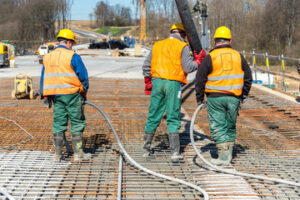Plumbing is one of the most essential services in any home. It is responsible for supplying clean water and removing waste in a safe manner. Without a functioning plumbing system, life would be very difficult for everyone.

Noticeable signs of plumbing issues include wet rings on walls or ceilings, as well as low water pressure. These are all signs of a potential pipe leak. Visit https://www.plumbing-express.com/ to learn more.
Valves might seem like a small part of your piping process or system, but they can have a big impact on long-term costs and performance. Choosing the right valve size is critical to optimizing costs and ensuring safe and accurate operations. Valve types can also differ by function. For example, some valves allow you to throttle the flow of fluid based on its opening %, while others are used to relieve pressure and vacuum conditions in order to safeguard equipment and systems.
The most important type of valve in any home is probably the isolation valve, or stop-valve, found under sinks and behind toilets. These little heroes are designed to completely seal off water flow to specific plumbing fixtures, stopping those annoying geysers of water that can lead to disastrous flooding and sky-high repair bills.
In more industrial settings, you’ll find a wide variety of valves. These are used to control the movement of liquids, gases and other materials in a number of processes, such as wastewater treatment, power generation and pharmaceutical manufacturing. Some of these processes use corrosive substances, so it’s important to choose the correct valve body material and internal trim parts for the application.
Another factor to consider is the valve’s end connections. There are several different options, including threaded, flanged and socket weld. Threaded connections are simple to assemble, but might not be as robust for high-pressure applications. Flanged connections feature flat, rimmed parts that are bolted to each other and the piping, providing strength and a secure connection. However, flanged valves are usually only recommended for applications that require large-diameter pipes.
Other options include socket weld and traditional compression valves. With traditional compression valves, a soft metal cuff called a ferrule is slid over the pipe end and then compressed between the nut and the valve socket to create a leak-resistant seal. The socket weld option is similar, except that the valve end and pipe socket are welded together. With both of these options, you’ll need to install pipe tape or sealant between the valve and pipe to protect against leaks.
Fixtures
Whether you’re building from scratch, remodeling an existing space, or simply looking to update your custom home with the latest fixtures, the right selection is essential. From faucets to sink basins, choosing the right plumbing fixtures can elevate your space and add an element of style that’s uniquely your own.
Faucets are among the most recognizable of all plumbing fixtures and can be found in kitchens, bathrooms, and even outside. Their primary purpose is to control water flow and make it easy for you to access your home’s water for cooking, cleaning, drinking, or showering. They’re available in a wide variety of styles and materials to match any décor, from classic to contemporary.
Bathtubs are another important fixture that provide comfort and convenience for bathing, cleaning, or just relaxing. They’re available in a variety of sizes, shapes, and features to suit your family’s unique needs. Toilets are another important plumbing fixture that play a crucial role in sanitation and waste disposal. They’re available in a range of styles, including those with handicap accessibility features for senior residents or new parents who have young children.
While you may not think about it often, your plumbing fixtures experience a lot of wear and tear. That’s why it’s important to replace them periodically to prevent leaks and other problems. In addition, replacing older fixtures with modern models can reduce your energy costs by reducing your home’s demand for heating and cooling.
Once your plumbing fixture installation is complete, it’s important to maintain them regularly to avoid costly repairs and keep them looking beautiful. Regular maintenance also helps to reduce your utility bills by lowering the amount of water and waste that goes into your sewer system. For example, installing water-saving fixtures such as low-flow toilets and faucets can help you save up to $210 per year in water and energy costs. For more information about maintaining your plumbing fixtures, reach out to a local plumber. They can answer any questions and guide you through the process of selecting the best fixtures for your home. They can also install or repair your fixtures if necessary.
Inspection
A home’s plumbing system may seem out of sight and out of mind, but that doesn’t mean it should be ignored. The sewage and wastewater pipes that transfer toxins from household drains into the main sewer lines are critical to a safe, healthy living environment. If something goes wrong with these lines, it can lead to devastating damage that requires extensive and expensive repairs. Fortunately, professional plumbing experts can detect problems through routine inspections and provide proactive solutions before they become major headaches.
Regular sewer line inspections allow plumbing specialists to spot trouble signs like slow draining, gurgling noises inside the house, and unpleasant odors in the yard. These issues can indicate blockages, cracks, and other damage to the pipes that must be addressed immediately before they cause significant damage.
In order to identify these problems, specialists use a camera-equipped device that is inserted into the sewer pipe. The footage provides valuable data, allowing them to pinpoint the exact location and extent of the issue. This method allows for non-invasive inspections that are less costly and much safer than digging up entire sections of the pipeline.
Plumbing professionals can also use video analysis to determine the best course of action for sewer line repair. In many cases, a simple patch or seal will suffice, but more severe damage may require excavation and replacement of the damaged section of pipe. In such situations, plumbers can create a detailed plan that includes material requirements, costs, and potential environmental impact.
In addition to protecting the integrity of your home’s plumbing system, routine sewer line inspections can increase its value. A well-maintained sewer system is a huge selling point for prospective homebuyers, and it can help you achieve the highest possible sale price. For these reasons, it’s important to schedule routine inspections with a local plumbing specialist at least once every two years. This will help you avoid the stress, hassle, and high costs of emergency repairs and maintain a reliable plumbing system for years to come.
Repair
The plumbing industry is a vital part of modern society, providing clean water for drinking and cooking. It also removes waste and sewage, keeping buildings safe and healthy for occupants. However, a faulty plumbing system can cause serious problems and expensive repairs. To avoid these issues, it is important to perform regular maintenance and hire a plumber when necessary.
Plumbers have a wide range of skills and can repair many types of plumbing fixtures. Some common services include leak detection, pipe repairs, and water heater installations. They can also help with sewer line problems, such as backups and blockages. Plumbers also have the ability to work with different materials, including copper, PVC, PEX, and galvanized steel.
While it may seem obvious that a working bathroom is a necessity, people often take for granted how essential this room truly is. If a person is unable to use the toilet, shower, or sink due to a sewer issue, it can be extremely inconvenient and even dangerous. A plumber can address these problems quickly and efficiently to ensure that the bathroom functions properly.
A good plumber can make all the difference when it comes to the health and safety of a home. If the water supply is contaminated, it can lead to severe health problems and even death. A plumber can test and monitor the quality of water in a home to ensure that it is safe to drink.
One of the most significant challenges in plumbing is ensuring that pipes are installed correctly. This requires careful attention to detail, as well as knowledge of local building codes and regulations. A plumber should also be aware of the environmental implications of their work, such as avoiding soil erosion and sediment runoff.
Lastly, a good plumber can provide valuable advice to their clients. This can help them save money on energy bills and reduce their carbon footprint. For example, a plumber can advise homeowners to install low-flow toilets and faucets, which can reduce their water usage by as much as 20%. In addition, a plumber can assist with the installation of rainwater collection systems, which can reduce the amount of water a household uses from outdoor sources.




